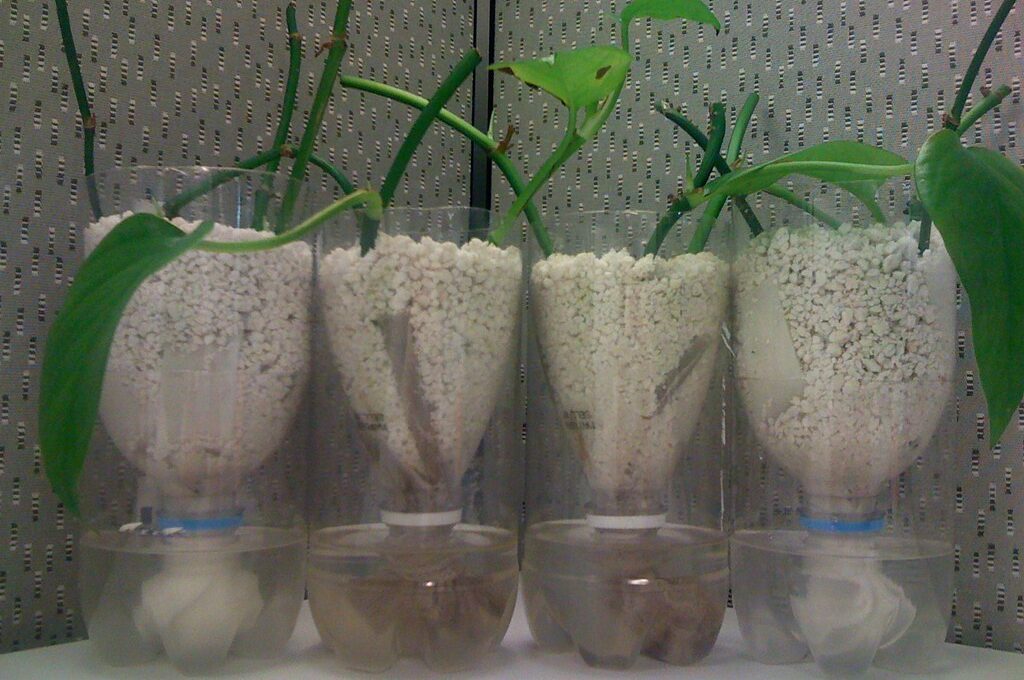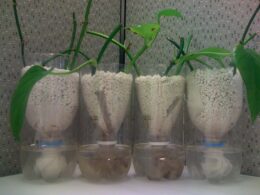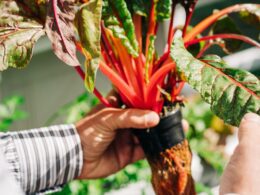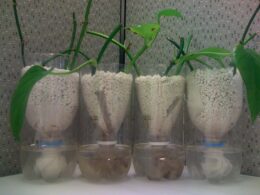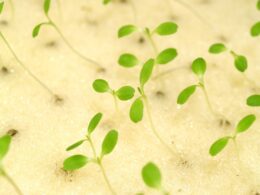Are you considering growing hydroponic plants but unsure if they need full sun?
Light is an essential element in any plant’s growth, and hydroponics is no exception. However, unlike traditional soil-based gardening, hydroponics requires a different approach to light exposure.
In this article, we will explore the importance of light for hydroponics and provide tips on how to optimize light exposure for your hydroponic plants. With the right knowledge and techniques, you can ensure your plants thrive and grow to their full potential, even without full sunlight.
So, let’s dive in and discover what your hydroponic plants need to thrive!
Understanding the Importance of Light for Hydroponics
You’ll be amazed at how crucial light is for your hydroponic plants to thrive, and without it, you could be sabotaging your efforts. Light intensity and duration play a significant role in the growth and development of your plants.
When it comes to hydroponics, light is the main source of energy for your plants, which means that it’s essential to provide them with enough light for them to grow and thrive. Light intensity refers to the amount of light that your plants receive. Different plants have different light requirements, and it’s essential to provide them with the right amount of light.
If your plants don’t receive enough light, they may grow slowly, become weak, and have a lower yield. On the other hand, if your plants receive too much light, they may become stressed and damaged.
Light duration is also crucial for the growth and development of your plants. The amount of light that your plants receive each day can affect their flowering, fruiting, and overall growth. Most hydroponic plants require at least 12 to 16 hours of light each day.
It’s essential to provide your plants with the right amount of light and ensure that they receive the right duration of light for them to grow and thrive. Remember, light is essential for your hydroponic plants to thrive, and without it, your efforts may be sabotaged.
So, make sure that you provide your plants with the right amount of light intensity and duration to ensure that they grow healthy and strong. Keep in mind that each plant has specific light requirements, so do your research to know how much light your plants need.
Factors to Consider for Optimal Light Exposure
When it comes to optimal light exposure for your hydroponic plants, there are three important factors to consider. Firstly, the species of plant and the growth stage it’s in will affect how much light it needs.
Secondly, your hydroponic system setup will determine the intensity and direction of light your plants receive.
Lastly, your geographic location and climate will influence the amount of natural light available and the need for supplemental lighting.
Keep these factors in mind to ensure your plants get the right amount of light for healthy growth.
Plant Species and Growth Stage
Growing plants in a hydroponic system requires understanding the specific needs of each plant species and their growth stage. When it comes to light exposure, different plant species have varying requirements. Some plants require full sun exposure, while others thrive under partial or even low light conditions. It’s essential to choose plants suitable for hydroponic systems and have light requirements that can be met in your specific setup.
The growth stage of the plant also plays a crucial role in determining its light exposure needs. Younger plants, particularly seedlings, require less light than mature plants because they’re still developing their photosynthetic capacity. As the plant grows, its light requirements increase, and it needs more light exposure to produce energy through photosynthesis.
It’s crucial to adjust the light exposure based on the plant’s growth stage to ensure optimal growth and yield in your hydroponic system.
Hydroponic System Setup
Setting up your hydroponic system is an exciting endeavor that requires careful planning and consideration of various factors. One of the key factors to consider is the nutrient solutions that your plants will need to grow.
Hydroponic systems require a nutrient-rich solution that provides all the necessary minerals and elements for plant growth. You can either purchase pre-made nutrient solutions or make your own using a recipe that is tailored to your specific plant species.
Another important factor to consider when setting up your hydroponic system is the container options. You can choose from a variety of different containers, including buckets, PVC pipes, and trays. The container you choose will depend on the size of your plants, the amount of space you have available, and your personal preference.
Regardless of which container you choose, it’s important to ensure that it is properly cleaned and sterilized before adding your nutrient solution and plants. By taking the time to carefully consider your nutrient solutions and container options, you can set up a successful hydroponic system that will provide your plants with everything they need to grow and thrive.
Geographic Location and Climate
Consider your geographic location and climate when choosing the appropriate plants for your hydroponic system and ensuring optimal growing conditions. Climate variations can have a significant impact on the success of your hydroponic system.
For example, if you live in a region with extreme temperatures, you may need to consider using insulation or a cooling system to regulate the temperature of your hydroponic setup. Similarly, if you live in an area with a high humidity level, you may need to invest in a dehumidifier to prevent mold and mildew growth in your hydroponic garden.
Location impact is another factor to consider when deciding which plants to grow in your hydroponic system. Different plants have different requirements for light exposure, and some may not thrive in your specific location.
For example, if you live in a region with limited sunlight, you may need to choose plants that don’t require full sun exposure. Fortunately, there are many hydroponic plants that can grow in low light conditions, such as lettuce, spinach, and herbs.
By taking into account your geographic location and climate, you can choose the right hydroponic plants and setup for your specific needs and ensure a successful harvest.
Alternatives to Full Sunlight
Using artificial lighting as an alternative to natural sunlight can provide consistent and controlled conditions for hydroponic plants to thrive. LED grow lights are commonly used in hydroponic systems to emit wavelengths crucial for photosynthesis, such as red and blue light. They are also energy-efficient and can mimic natural sunlight through programming.
Artificial lighting can also address shading issues in outdoor hydroponic setups. Shade cloth is commonly used to protect plants from excessive sunlight, but it can also limit light reaching the plants. By supplementing with artificial lighting, hydroponic farmers can maintain optimal light levels for their crops, even under shaded conditions.
In summary, hydroponic plants do not necessarily need full sunlight to thrive. Artificial lighting offers a reliable alternative that can provide consistent and controlled conditions for plant growth. LED grow lights and shade cloth can be used together to ensure that crops receive the necessary light for healthy growth.
Can Hydroponic Plants Thrive in a Greenhouse Setting?
Hydroponic plants and greenhouses go hand in hand, as the controlled environment they provide allows for optimal growth. With precise nutrient levels and controlled lighting, hydroponic plants can thrive in a greenhouse setting. This method offers efficient water usage, no soil requirements, and protection from harsh weather conditions, making it an ideal choice for growers seeking higher yields and healthier crops.
Tips for Maximizing Light Exposure
You can get the most out of your hydroponic setup by maximizing your plants’ exposure to light – here are some tips to help you make the most of your artificial lighting!
With vertical farming and artificial lighting, you can ensure that your plants receive the necessary amount of light to grow and thrive. Here are some tips to help you make the most of your artificial lighting:
- Position your lights correctly: Make sure your lights are positioned at the right height and distance from your plants to maximize exposure.
- Use reflective surfaces: Reflective surfaces can help to bounce light around your growing area and ensure that your plants receive the light they need.
- Use the right type of light: Different types of artificial lights can provide different spectrums of light, so make sure you choose the right type of light for your plants.
- Use timers: Timers can help to ensure that your plants receive the right amount of light each day and can also help to automate your growing process.
- Monitor your plants: Keep an eye on your plants and adjust your lighting as needed to ensure that they are receiving the right amount of light.
By following these tips, you can make the most of your artificial lighting and ensure that your hydroponic setup is as successful as possible. With vertical farming and artificial lighting, you can create a growing environment that is optimized for your plants – and with a little bit of effort, you can achieve great results!
Conclusion: Finding the Right Balance for Your Hydroponic Plants
Achieving the right balance of light exposure for your hydroponic plants is crucial for their growth and success. While it’s true that hydroponic plants don’t need full sun, they still require a specific amount of light to thrive. Too little light can cause stunted growth, while too much can lead to burning and wilting. The key is to find the right balance that’ll provide your plants with enough light to produce healthy growth.
Aside from light, nutrient solutions and water quality are also essential factors to consider when growing hydroponic plants. Nutrient solutions are necessary for providing plants with the necessary nutrients they need to grow, while water quality is important for maintaining the right pH level for your hydroponic system. Keep in mind that poor water quality can negatively affect the growth of your plants, so it’s important to regularly test and adjust the pH level as needed.
In conclusion, finding the right balance for your hydroponic plants is crucial for their success. Make sure to provide your plants with the right amount of light, nutrient solutions, and water quality to ensure healthy growth. With proper care and attention, you can create a thriving hydroponic system that’ll provide you with fresh and healthy produce all year round.
Frequently Asked Questions
What are the benefits of using artificial light for hydroponics?
When it comes to hydroponics, artificial light can be just as effective, if not more so, than natural light. The optimal light spectrum for hydroponics is made up of red and blue wavelengths, which can be achieved through the use of LED lights.
With artificial light, you have control over the intensity, duration, and spectrum, allowing you to customize the lighting to meet the specific needs of your plants. Plus, using artificial light means you don’t have to rely on the weather or worry about the amount of sunlight your plants are getting.
So, if you want to ensure your plants are getting the best lighting possible for their growth, consider using artificial light for your hydroponic setup.
How much light is too much for hydroponic plants?
To ensure optimal growth for your hydroponic plants, it’s important to provide them with the right amount of light. Too much light can actually be harmful, so it’s important to find the right balance.
Generally, hydroponic plants need between 12 and 16 hours of light per day, but this can vary depending on the specific type of plant you’re growing. It’s also important to consider the intensity of the light. If the light is too bright, it can damage the plants and stunt their growth.
In general, it’s best to aim for an optimal light intensity of around 800 to 1000 micromoles per square meter per second. By monitoring both the duration and intensity of the light, you can ensure that your hydroponic plants are getting the right amount of light to thrive.
Can hydroponic plants survive without any light?
If you’re thinking of growing hydroponic plants without any light, it’s important to understand the role that light plays in their growth and development. Hydroponic plants need light to photosynthesize, which is the process by which they convert light energy into chemical energy to fuel their growth.
Without light, hydroponic plants will not be able to grow and will eventually die. However, there are ways to optimize hydroponic lighting efficiency and reduce the amount of light needed to grow healthy plants. By using the right type of LED grow lights and adjusting their placement and intensity, you can provide your hydroponic plants with the light they need to thrive, without wasting energy or causing damage to your plants.
What is the best type of artificial light for hydroponics?
When it comes to finding the best type of artificial light for hydroponics, LED lights and fluorescent lights are both popular choices. LED lights tend to be more energy-efficient and produce less heat, while fluorescent lights are generally cheaper.
However, the most important factor to consider is the light spectrum. Hydroponic plants require a specific range of light, including red and blue wavelengths, to grow and thrive. Make sure to choose lights that provide a balanced spectrum to ensure healthy plant growth.
By selecting the right type of light, you can create a safe and effective environment for your hydroponic plants to flourish.
How do you troubleshoot light-related issues in a hydroponic system?
If you’re experiencing problems with your hydroponic system, it’s important to troubleshoot the light-related issues first.
One common issue is light intensity, which can be solved by adjusting the distance between the light source and your plants.
Another issue could be nutrient deficiency, which can be caused by inadequate lighting or incorrect nutrient ratios.
To avoid these problems, make sure to regularly check and adjust your lighting system and nutrient solution.
By doing so, you can ensure that your plants grow healthy and strong, and your hydroponic system flourishes.
Conclusion
So, do hydroponics need full sun? They don’t always require it. Instead, it’s important to understand the optimal light exposure for your specific plants and adjust accordingly. Factors like the type of plant, the stage of growth, and the intensity of the light all play a role in determining the amount of light needed.
If full sunlight isn’t an option, there are alternatives like LED lights or reflective surfaces that can provide the necessary light. Ultimately, finding the right balance of light for your hydroponic plants will lead to healthier, more productive growth.
So, take the time to assess your system and make adjustments as needed. Your plants will thank you for it.





